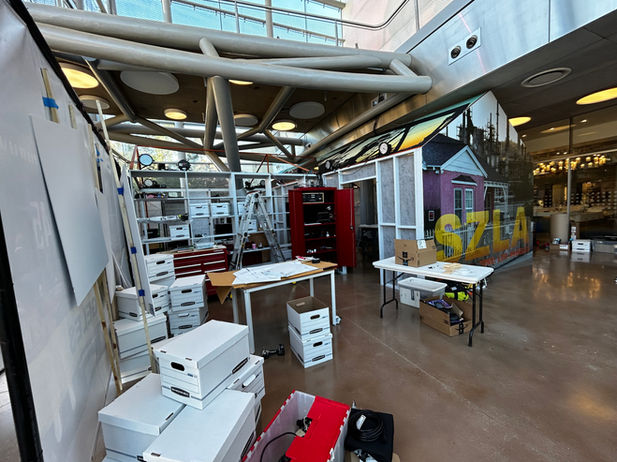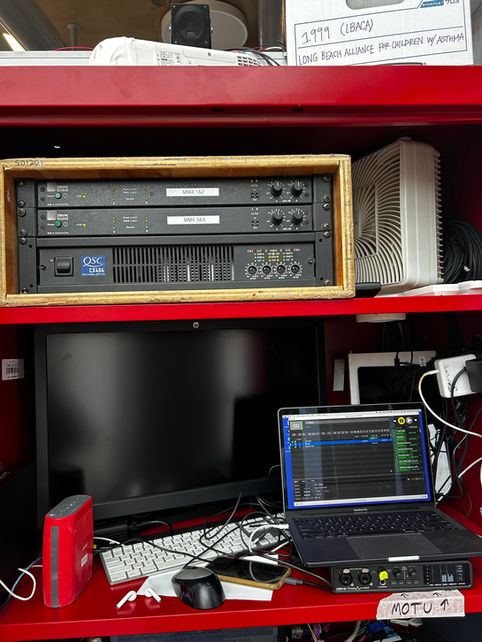Create Your First Project
Start adding your projects to your portfolio. Click on "Manage Projects" to get started
Sacrifice Zone: Los Angeles
Date
January 13-28, 2024
Location
Los Angeles Natural History Museum
Created by
Michael Bodie & Paula Cizmar
Scenic Design
Sibyl Wickersheimer
Interactivity Design
Luke Quezada
Costume Design
Ann Closs-Farley
Lighting Design
Oleyar Oleyar
Sound Design
Amelia Anello
Sacrifice Zone: Los Angeles (SZLA) is an immersive and interactive environmental justice experience that is presented through this website, as well as an exhibition with live performance. Utilizing multimedia enriched, documentary theater and film storytelling, SZLA highlights the damaging effects of decades of industrial pollution on South Los Angeles communities. The website provides insights into the myriad issues we explore in the live experience.
This was easily the most challenging project of my sound design career up to this point. I joined the design team when Pippin was at its busiest in October of 2023, and very quickly had to learn about renting audio gear and working in a very non-traditional theater space, with a very non-traditional script and project. The challenges immediately presented to me by the producers was the issue of audio bleed between rooms, as the set did not have any solid walls, and the fact that the installation was located inside a giant glass box with a concrete floor. Two major issues to create clear, crisp, good sound. Instead of fighting those issues, I proposed that we lean into the intelligibility of sound that this kind of space would create, and have the bleed allow the entire exhibit to be loud all the time. As an environmental justice project, part of the direction and focus of the sound design was to demonstrate the audio pollution present in these neighborhoods, and that is exactly what ended up happening. I wouldn’t call the sound that was in the exhibit pleasant, and it wasn’t terrible or annoying enough to make you leave, but it was definitely present and polluted the house.
The exhibit during the day had a slightly different sound design than the performances at night. The main difference was volume, as the audience had to be able to hear the cast, and it also featured some dropped source sounds, such as the neighbor’s dog in the kitchen and the oil refinery alarm in the living room. Because there was no crew, we could not have any cues during the performance, only before it started.
It was designed using QLab 4, as there were budget constraints and time restrictions, and the system was Meyer speakers, Mackie speakers, and a Meyer sub. Our distribution was with a MOTU, and due to budget constraints, there was no audio load-in crew, so I had a very fun time installing the entire system on my own. Each room had a mono channel sending to it, with the exception of the truck cab, with multiple speakers on each channel to create a more encompassing sound. The garage, bedroom, and living room all had two speakers each, with the kitchen having three. The truck cab featured a sub and two larger speakers, the sub providing enough low frequency that it was felt not only on the truck seats, but also throughout the rest of the house.
https://www.sacrifice-zone.com/























